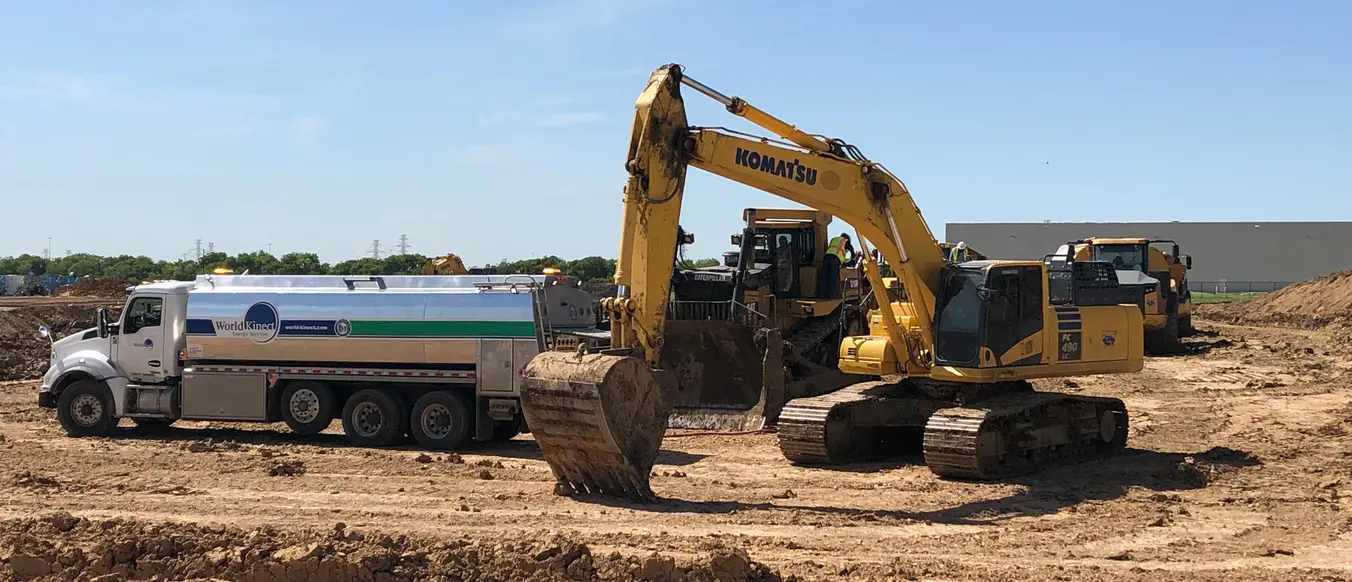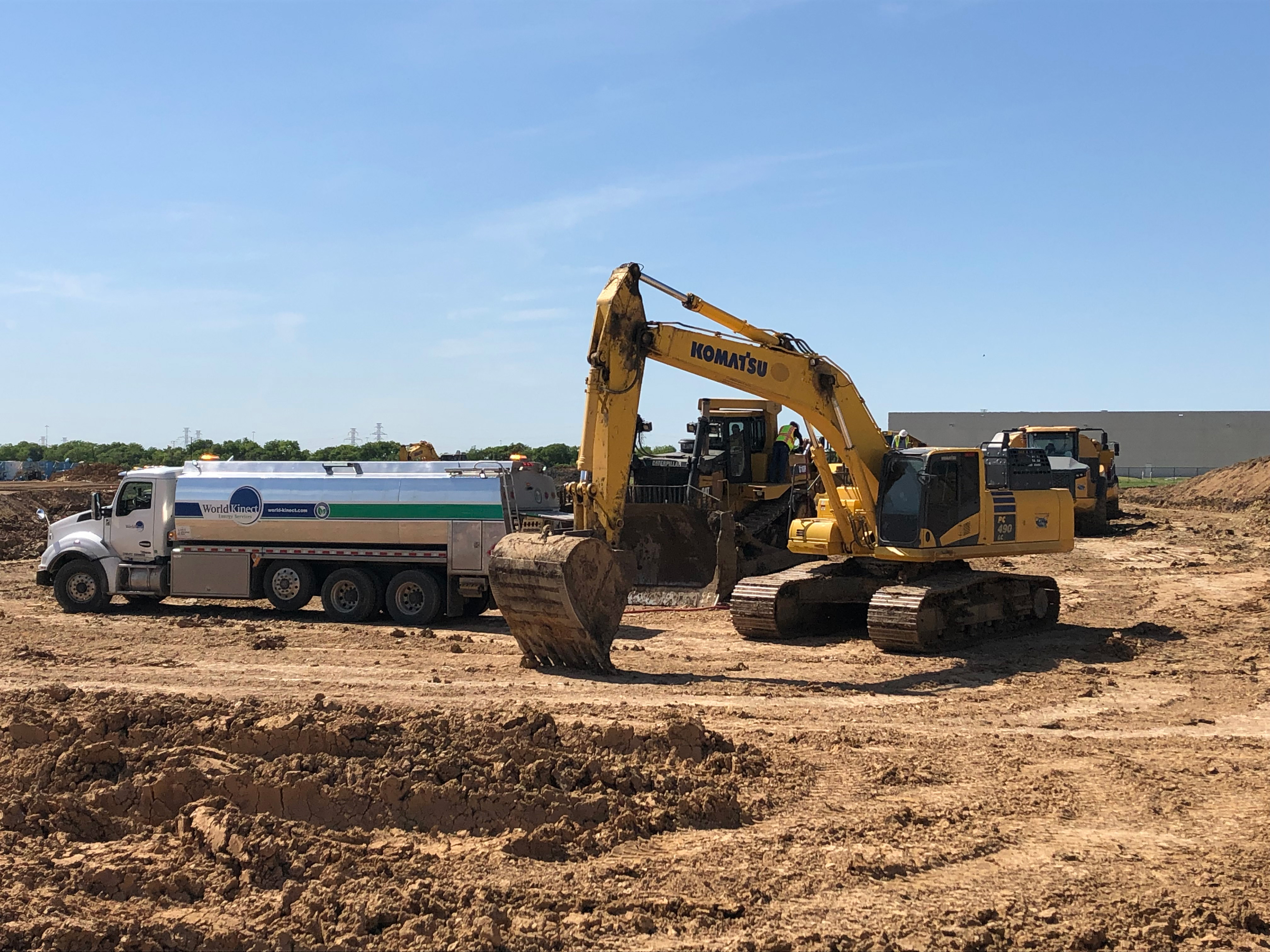Fuel your construction site: 5 strategies for maximum efficiency

Fuel strategy is business strategy
Your business runs on fuel. Since fuel makes up such a large portion of your operational expenses, you need fuel management practices that increase efficiency and reduce waste. These five strategies can help ensure your equipment runs reliably while keeping fuel costs down.
1. Analyze and optimize your fuel usage
The first step is understanding where and how you are using fuel. A detailed analysis can reveal opportunities for cost savings and process improvements.
- Does your fleet primarily operate on local roads or off-road?
- Does your fleet return to the same location each night?
- Do you have established routine maintenance schedules for your machinery?
- Do your refueling schedules match usage patterns?
- Are your operators well trained on their machines and aware of activities that waste fuel?
2. Manage fuel costs
There are often opportunities to reduce fuel costs. One area to examine and optimize is how your fleet is being fueled.
Fleet fuel cards
Prices are often discounted in fuel card programs, and fleet cards can help control spending by using preset limits, such as day, time of day, and equipment volume limits. Additionally, as a fleet manager, some cards can restrict transactions to fuel only. Many fleet fuel cards include detailed reporting so you can track fuel usage in real time.
Bulk fuel delivery
Buying in bulk helps you lock in competitive rates and reduce cost variability. Mobile tanks can be delivered to a site (and moved) as a job progresses. A knowledgeable fuel service provider can help you find the most cost-effective off-road bulk fuel and tank solution for your fleet. There are also price risk management solutions (such as fixed forward pricing) that can help you lock in fuel prices and provide more certainty for budgeting.
3. Optimize your operations and processes
Prevent disruptions with onsite fleet fueling
Refueling onsite is another option to reduce downtime and keep projects on schedule. With onsite fleet fueling, fuel is delivered directly to your equipment so drivers can start the day with a full tank instead of taking time out to fuel.
Reduce unnecessary fuel burn
According to Environmental Protection Agency (EPA) studies, many construction companies could reduce their fuel consumption by up to 15% by optimizing processes. Strive to build a culture within your company that encourages operators to know and use best practices around fuel usage. Improper handling of machines—or just ingrained bad habits such as frequent idling, abrupt braking, or sudden acceleration—can significantly impact fuel efficiency.
Track your data with a fuel management system
Fuel monitoring systems can detect anomalies in fuel usage and alert you to possible problems. With real-time visibility of fuel levels, fuel inventory management becomes easy—it can even be automated.
“I would certainly recommend World Kinect and their services to anybody who has to track and manage any sort of level of fuel. It’s a seamless process. It can be tailored. It is very beneficial, and it saves a lot of time and money.”
—Gary Smith, Fleet Manager, Fred Smith Company, NC, USA
The Fred Smith Company uses over 2.5 million USG of fuel annually across operations throughout two states. Their customized solution led to more efficient and cost-effective operations.
4. Protect your fuel supply
Your fuel is an essential asset. External threats such as theft or weather can lead to disruptions. Maintain fuel efficiency and keep your projects running on schedule by protecting your fuel supply.
- Avoid accidents by training your operators in best practices for fuel handling, storage, and safe usage.
- Prevent theft by installing telemetry systems, fuel markers, and tank alarms.
- Keep fuel safe from summer storms and freezing conditions.
- Guard against fuel contamination through routine cleaning and maintenance of storage tanks.
- Draft an emergency plan that includes securing a backup fuel supply if needed.
5. Plan for sustainability and regulatory compliance
Federal and state carbon emission regulations are evolving, making sustainability planning more important. Fortunately, sustainability isn’t just about going green—it’s about fueling smarter. By planning for U.S. carbon regulations, you can boost fuel efficiency and cut costs.
- Explore alternative fuels such as biofuel and renewable diesel.
- Develop a carbon reduction plan to lower emissions.
- Compensate for unavoidable emissions through verified programs.
Optimize off-road fuel efficiency with World Kinect’s fuel solutions
Fuel efficiency isn’t just a healthy goal—it’s a game-changer for your business. World Kinect, a Fortune 100 leader, partners with you to make it happen. Our experts deliver tailored solutions, from bulk fuel delivery and tank monitoring to sustainability plans and emergency preparedness. As the one-stop solution for all your fuel supply needs, we help you cut costs and keep your fleet and machinery running smoothly. With over 17 billion gallons delivered annually, we’re ready to fuel your success.



